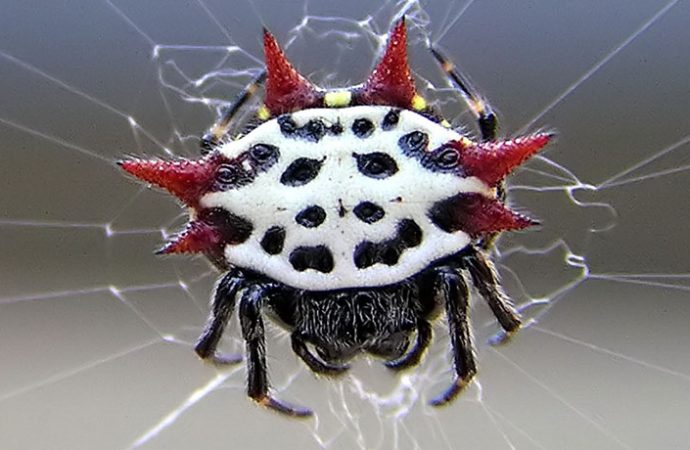Three arachnid species experience the equivalent of five-hour jet lag every day
If it takes you a while to recover from a few lost hours of sleep, be grateful you aren’t an orb weaver.
Three orb-weaving spiders — Allocyclosa bifurca, Cyclosa turbinata and Gasteracantha cancriformis — may have the shortest natural circadian rhythms discovered in an animal thus far, researchers reported November 12 at the Society for Neuroscience’s annual meeting.
Most animals have natural body clocks that run closer to the 24-hour day-night cycle, plus or minus a couple hours, and light helps reset the body’s timing each day. But the three orb weavers’ body clocks average at about 17.4, 18.5 and 19 hours respectively. This means the crawlers must shift their cycle of activity and inactivity — the spider equivalent of wake and sleep cycles — by about five hours each day to keep up with the normal solar cycle.
“That’s like flying across more than five time zones, and experiencing that much jet lag each day in order to stay synchronized with the typical day-night cycle,” said Darrell Moore, a neurobiologist at East Tennessee State University in Johnson City.
“Circadian clocks actually keep us from going into chaos,” he added. “Theoretically, [the spiders] should not exist.”
For most animals, internal clocks help them perform recurring daily activities, like eat, sleep and hunt, at the most appropriate time of day. Previous studies have shown that animals that are out of sync with the 24-hour solar cycle are usually less likely to produce healthy offspring than those that aren’t.
Moore and his colleagues were surprised to find the short circadian clocks while studying aggression and passivity in an orb weaver. The team was trying to see if there was a circadian component to these predatory and preylike behaviors, when they discovered C. turbinata’s exceptionally short circadian cycles. “I was looking at this thing thinking, ‘That can’t be right,’” said Moore.
To measure spiders’ natural biological clocks without the resetting effect of the sun, the researchers placed 18 species of spiders in constant darkness and monitored their motion. Three orb weaver species in particular had incredibly short cycles of activity and inactivity.
As far as the researchers know, the short cycle does not seem to be a problem for these spiders. In fact, it might even be useful. Short clocks may help these orb weavers avoid becoming the proverbial “worm” to the earliest birds, the researchers hypothesize. Since the spiders become more active at dusk and begin spinning their webs three to five hours before dawn, they can avoid predators that hunt in the day.
Throughout the day, the spiders remain motionless on their web, prepared to pounce on their next meal. By midday, the spiders’ truncated circadian clocks should have reset, sparking a new round of activity. But in the five to seven hours of daylight left, the orb weavers remain inactive. It’s hard to say whether the spiders are actually resting, Moore said. The researchers suspect that light may delay the onset of another short circadian cycle each day, helping the spiders stay synchronized with the 24-hour environmental cycle.
“The method or molecular mechanism will be really fascinating to figure out,” said Sigrid Veasey, a neuroscientist at the University of Pennsylvania’s Perelman School of Medicine. She is curious to know how the spiders can be so far off from “normal” circadian periods, and still be able to match their activity to the 24-hour light and dark cycle.
Determining the differences between short and normal period clocks in spiders may help researchers find out why and how different circadian clocks are suited to the particular environmental challenges of each species, Moore said.
Source: Science News
































Leave a Comment
You must be logged in to post a comment.